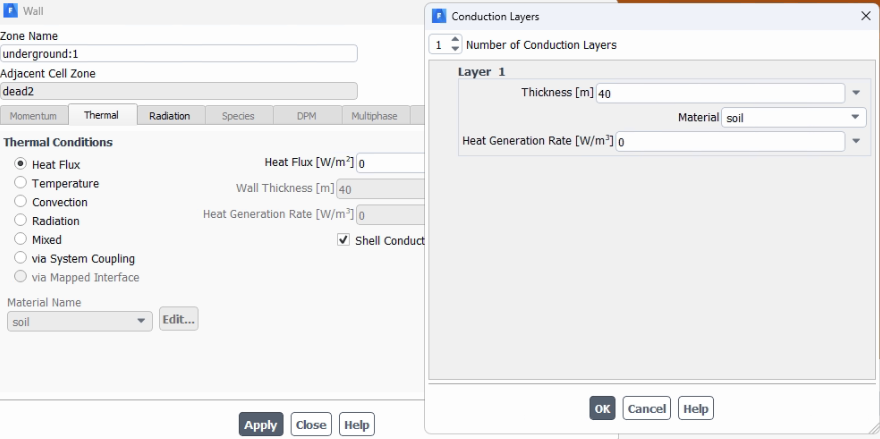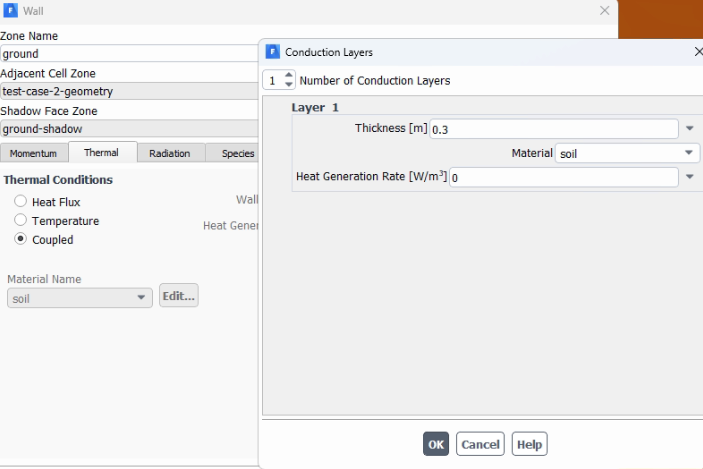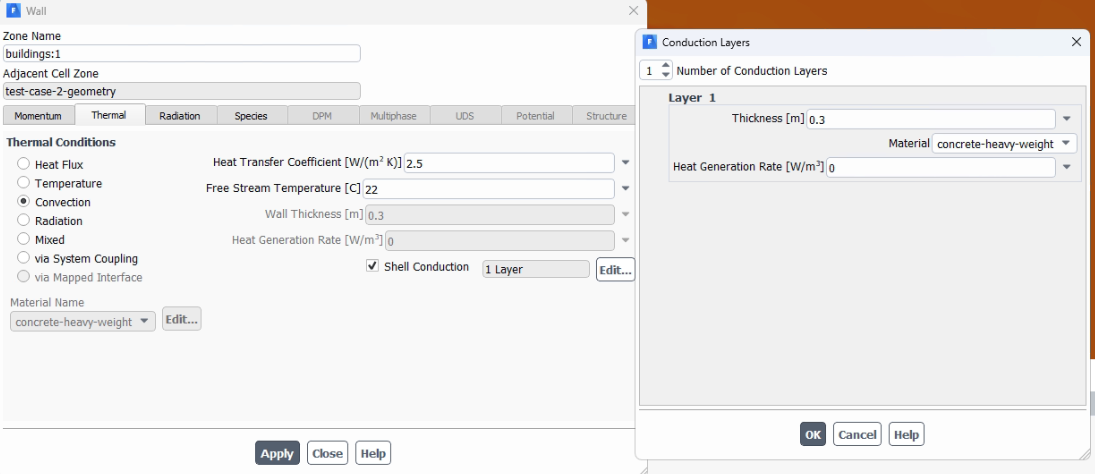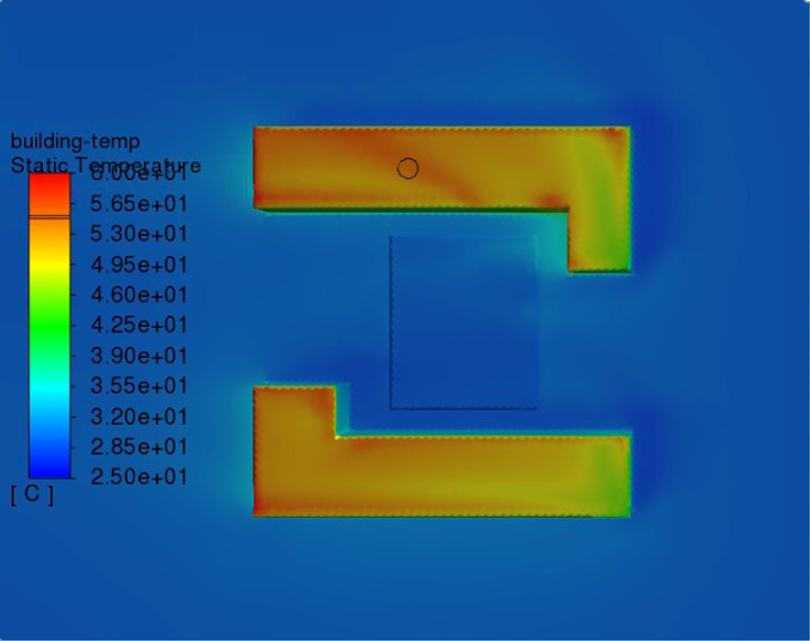-
-
November 1, 2023 at 4:24 am
anhvu lee
SubscriberHi,
I have a confuse in result of the case is using and is not using Shell conduction. In this case, I set:
- The temperature for the underground is 29oC, thickness 40m.

- The surface of underground part - named "ground" represent the one that we're walking on, using Shell conduction

- The air temperature is 27oC
- The building used Convection thermal conditions, and shell conduction

- - - - - - - - -
The results of the case with Shell conduction is higher than the case without Shell conduction, especially in the surface of underground
I'm so confusing of why the surface temperature is high like that, and why the building surface temperature also be affected while there's only change in ground settings
Looking forward for your suggestions
Thanks
- The temperature for the underground is 29oC, thickness 40m.
-
November 8, 2023 at 3:58 pm
SVV
Ansys EmployeeHi,
From the geometry,the case with and without shell looks exactly same. May I please know if you are providing the equivalent solid layer with mesh when you are not using shell conduction. May I also know if both simulation is converged and there is no flux imbalance. I also assume the quality of mesh is atleast 0.1.
-
November 9, 2023 at 2:48 am
anhvu lee
SubscriberHi,
All the settings are exactly the same, except Shell conduction option.
In the case of No shell conduction for ground surface, the ground surface is around 27, while it's around 35 when used Shell conduction. But in the contrast, when I didn't use Shell conduction for Building, the building surface temperature is really high (as picture below), compared with the result with Shell.
-
- The topic ‘Heat absorption through Shell conduction’ is closed to new replies.



-
3472
-
1057
-
1051
-
929
-
896

© 2025 Copyright ANSYS, Inc. All rights reserved.








